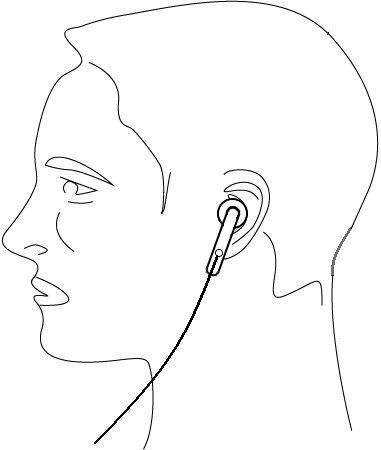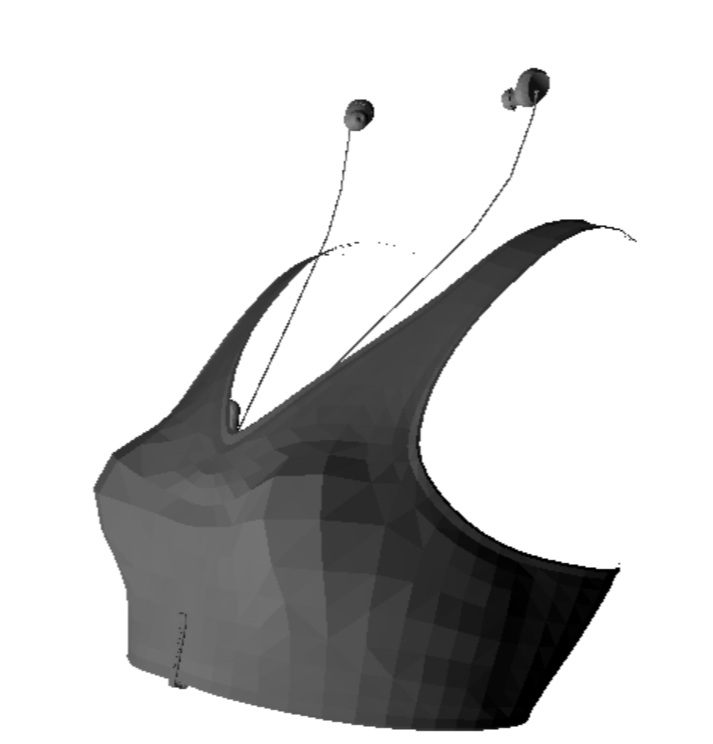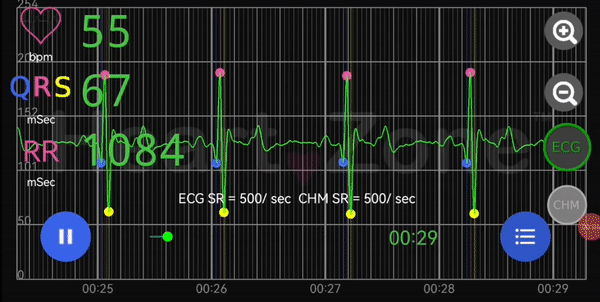
Earbuds use "in-ear" electrodes. The in-ear earbud's enclosure ( E ) is made from an electrically conductive material.
In-ear electrode ( E ) creates an electrical contact with concha of the ear and transmit the electrical signals to ChMic via a wire ( W ).
A wire ( W ) could be connected to electrode
( E ) via magnets ( M ) or a metal clip.



ChMic receives electrical signals from two in-ear electrodes via wires and one built-in electrode adjacent to the chest. Based on these electrical signals it detects ECG waveform and transmits it via Bluetooth LE to an app on a smartphone.
ChMic also has a built-in microphone. It is used to detect chest sounds coming from the heart beat and breathing. ChMic digitizes these sounds and transmits via Bluetooth LE to the app on a smartphone.
An example of wearing ChMic with TWS earbuds by a woman is shown in 3D model.
ChMic transmits ECG waveform together with the heart & chest sounds to an app on a smartphone via Bluetooth LE.
The app on a smartphone processes ECG waveform and detects vital heart data: pulse, QRS, PQ, ST, RR intervals, detects variability and arrhythmia.
From chest sounds it calculates respiration rate.

Heart.Zone designed ECG ChMic unit which is placed on a chest and connected to earbuds via two wires.
Placing H♥Z ChMic on a chest allows it to connect one of the electrodes to the skin and also pick the chest sounds from heart and lungs.
Two wires connect to each earbud and pick electrical signals from soft in-ear electrodes. They also serve as a safety leash, preventing the earbuds from dropping out while in motion.
- PurposeECG & chest sounds monitoring
- ConnectivityBluetooth LE
- PowerRechargeable battery
- Operating time90 hours
- ChargingUSB Type-C
- L60.0 mm
- W15.0 mm
- H12.0 mm
Headline image is designed by Freepiks

